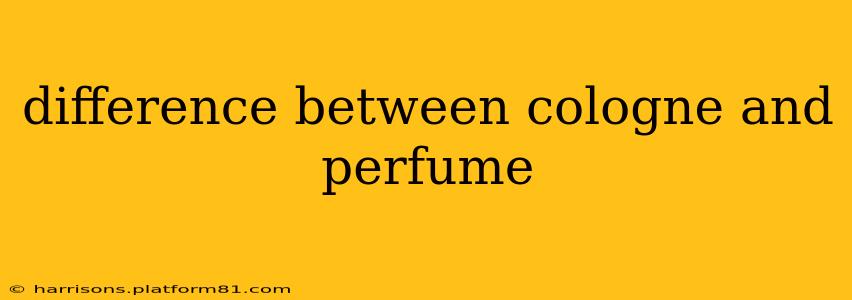The Difference Between Cologne and Perfume: A Guide to Fragrance Concentration
The world of fragrance can be confusing, with a dizzying array of choices and terms. Two of the most common, and often misunderstood, are cologne and perfume. The key difference lies in the concentration of aromatic compounds – essentially, how much fragrant oil is mixed with alcohol. This concentration directly impacts the scent's strength, longevity, and price.
Let's break down the distinctions:
What is Perfume (or Parfum)?
Perfume, also known as Parfum in French, boasts the highest concentration of fragrance oils, typically ranging from 15% to 40%. This high concentration results in a potent, long-lasting scent that can linger on the skin for hours, sometimes even a full day. Because of the high concentration of oils and the luxurious feel, perfume is usually the most expensive option.
What is Cologne (Eau de Cologne)?
Cologne, or Eau de Cologne in French, sits at the opposite end of the spectrum. It has the lowest concentration of fragrance oils, typically between 2% and 4%. This means the scent is lighter, more subtle, and less persistent. Cologne is generally the least expensive type of fragrance due to its lower oil content. It's often described as refreshing and invigorating, ideal for daytime wear.
What are the other fragrance types? (Eau de Toilette, Eau de Parfum)
While cologne and perfume represent the extremes, there are intermediate fragrance types:
-
Eau de Toilette (EDT): This falls between cologne and perfume in terms of concentration, typically containing 5% to 15% fragrance oils. EDTs offer a good balance between longevity and intensity, making them versatile for various occasions.
-
Eau de Parfum (EDP): EDPs have a higher concentration than EDTs, usually between 10% and 20% fragrance oils. They are stronger and longer-lasting than EDTs but not quite as intense as perfumes. Many consider EDPs to offer the best balance of scent strength, longevity, and price.
What is the difference in longevity?
This is a key differentiator:
- Perfume (Parfum): Longest lasting, often 6-8 hours or longer.
- Eau de Parfum (EDP): Lasts 4-5 hours.
- Eau de Toilette (EDT): Lasts 2-3 hours.
- Cologne (Eau de Cologne): Shortest lasting, generally 1-2 hours.
Which fragrance is right for me?
The best type of fragrance for you depends on your personal preferences, the occasion, and your budget:
- Perfume: Ideal for special occasions or evenings where a strong, long-lasting scent is desired.
- Eau de Parfum: A popular choice for everyday use, offering a good balance of strength and longevity.
- Eau de Toilette: Suitable for daytime wear or situations where a lighter scent is preferred.
- Cologne: Best for a quick refresh throughout the day or for those who prefer subtle fragrances.
Ultimately, the best way to determine your preference is to sample different fragrance concentrations and experience the nuances for yourself.
How long does cologne last?
As mentioned above, cologne (Eau de Cologne) typically lasts only 1-2 hours. This is due to its low concentration of fragrance oils. The scent is more delicate and ephemeral than other fragrance types.
How is cologne different from perfume?
The core difference lies in the concentration of fragrance oils. Perfume has a much higher concentration (15-40%), leading to a stronger, longer-lasting scent. Cologne has a much lower concentration (2-4%), resulting in a lighter, shorter-lasting scent. The price reflects this difference in concentration.
Is cologne better than perfume?
There's no objectively "better" option – it's a matter of personal preference. If you prefer a strong, long-lasting scent, perfume is the way to go. If you prefer a lighter, refreshing scent that doesn't overpower, cologne might be more suitable. Consider the occasion and your own sensitivity to scent when making your choice.
